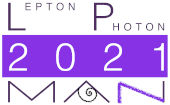Speaker
Description
The detection of ultra-rare events as the interaction of galactic dark matter (DM) candidate
particles or of neutrinos originated from the Sun requires the development of innovative detection
techniques. In particular future experiments for direct DM detection requires to extend their
sensitivity to masses well below 10 GeV.
The Cygno collaboration plans to build and operate at LNGS a cubic meter demonstrator of a
gaseous time projection chamber (TPC), equipped with an optical readout and using a He:CF4
mixture kept at atmospheric pressure. The presence of low Z atoms allows to reach a competitive
sensitivity to DM masses in the GeV range while the presence of fluorine can be used to set limits
on a spin-dependent DM interaction cross-section.
The Cygno TPC is equipped with a Gas Electron Multipliers (GEM) amplification stage of
the primary ionisation electrons. Light is produced from the GEM while scientific CMOS camers
and fast photodetectors are combined to obtaining a three-dimensional reconstruction of the tracks
either due to nuclear or to electron recoils.
The design and the sensitivity of the demonstrator based on advanced Monte Carlo
simulations of the radioactivity of the materials and of the LNGS cavern are reported. Pattern
recognition algorithms are used to evaluate the identification capability of nuclear recoils against
electronic recoils and studied in data from small scale prototypes. Energy measurement and also
sensitivity to the source directionality are also evaluated. Therefore, a Cygno TPC would also be
able to detect electron recoils originated by solar neutrinos interactions.
The Cygno collaboration plans to demonstrated the scalability of such detector concept to
reach a target mass large enough to significantly extend our knowledge about DM nature and
solar neutrinos.
